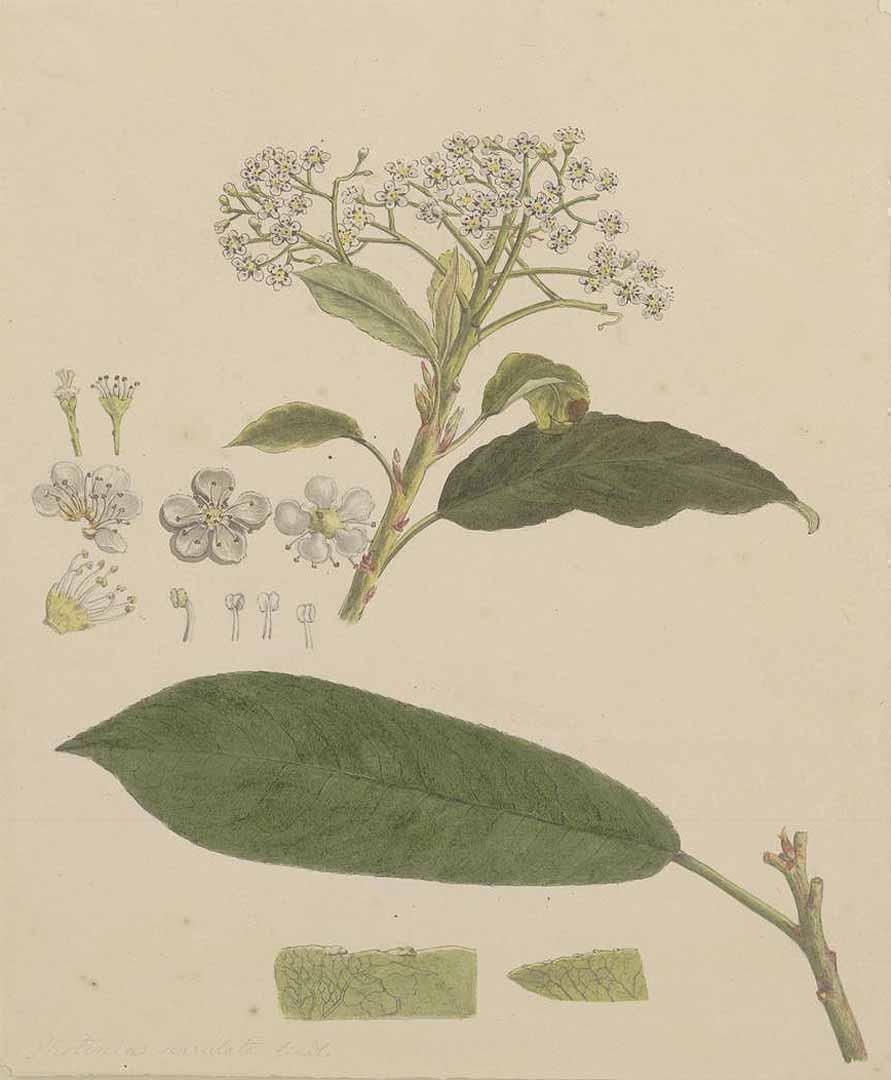Photinia serratifolia (Desf.) Kalkman
RosaceaePhotinia deriva del griego y significa reluciente, aludiendo a su follaje brillante que, además, cambia de coloración: sus hojas, en su fase juvenil, son de color rojo para luego pasar al verde y, en la fase anterior a la caída, vuelven al color rojo. Las bayas son a su vez de color rojo en otoño. Este arbusto con aspecto arbóreo, familia de las rosáceas, fue introducido en Europa en 1796 desde China, Formosa, Japón y otras zonas asiáticas próximas. En la provincia china de Anhui, una de sus zonas de origen, la fotinia crece formando grandes bosques mixtos que se extienden desde los valles hasta cotas superiores a los 2.000 metros de altura. En Sevilla está la especie bien representada, al menos desde los años setenta, al plantarse en las zonas ajardinadas de barrios construidos en aquel momento como Alcosa, La Oliva o El Porvenir. Muchos ejemplares hay también en el Parque de María Luisa, plantados sobre pies de cydonia oblonga o membrillos para que puedan adquirir porte arbóreo.
Procedencia
Oriental/AsiáticoCalendario
Hábitat
Morfología
 Árbol
Árbol
 Ovoidal
Ovoidal
 Simple
Simple
 Elíptica
Elíptica
 Lanceolada
Lanceolada
 Obovada
Obovada
 Alterna
Alterna
 Dentado
Dentado
 Entero
Entero
 Cuneada
Cuneada
 Obtusa
Obtusa
 Acuminado
Acuminado
 Perenne
Perenne
